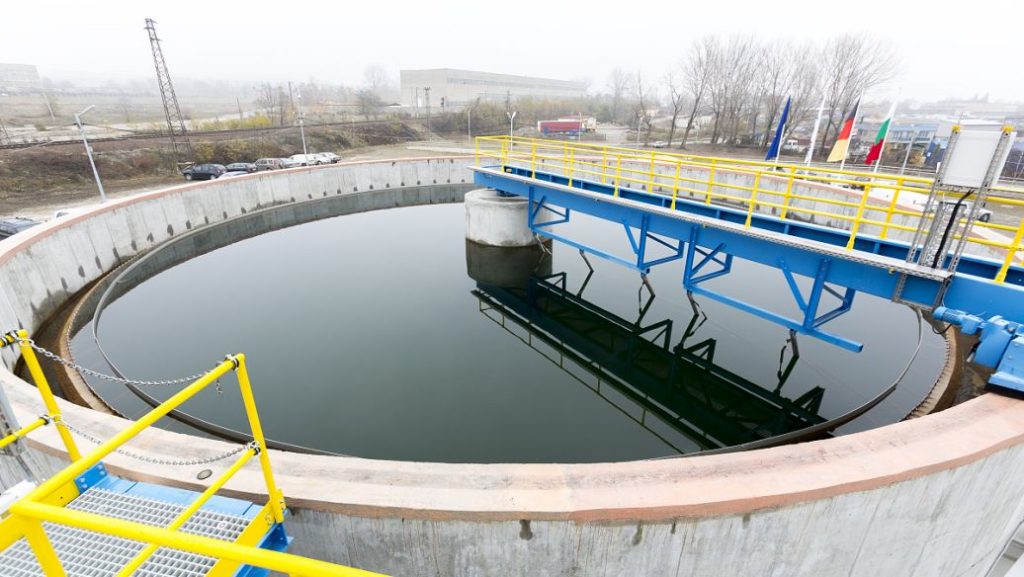What is a biological wastewater treatment system?
Wastewater or human generated waste is typically treated by public treatment plants (or POTWs), which are city, county or regional facilities. Depending on how the facility is financed and built will determine how they operate, but in general, these systems treat these wastes, separate out all the solids, and dispose of the remaining manufacturable by-products. Biological wastewater treatment systems are only a small part of a larger process that treats human waste by using bacteria and other fellow microorganisms to break it down into other byproducts (such as sludge)?

How do biological wastewater treatment systems work?
In most cases, POTWs operate their biological wastewater treatment systems aerobically through a process called “activated sludge” (which means they use bacteria that require oxygen to break down the waste).
In short, activated sludge is a secondary treatment method that occurs after untreated wastewater is collected from throughout the city, passes through all the sewers, enters pumping stations and transfer stations, and then concentrates the waste at the treatment plant. Here it enters a series of pretreatment processes, mainly for solids removal (screening, clarification, grit removal, etc.), before entering the reaction tank where the biological part of the wastewater treatment or activated sludge treatment takes place.
In the reaction tank (where all bacteria and microorganisms are housed, supplied and charged with oxygen), water flows through and undergoes microbial treatment. The treated water then flows through another clarifier where the biosolids (all the solids produced after the biological work is completed) are separated while retaining the microorganisms. In this clarifier, they settle to the bottom of the conical bottom and are either returned to the tank as activated sludge or wasted as solids before being dewatered and sent to an anaerobic digester or farm.
In short, wastewater activated sludge is the process of combining untreated wastewater with bacteria, allowing the bacteria to grow and break down on all components of the wastewater while retaining the bacteria by balancing the returned activated sludge with the wasted activated sludge.
You are essentially.
- Grow the organisms in suspension and retain them
- Mix the wastewater with the biomass
- Aerate this “mix” so that the bacteria can work
- Resolve the mixed liquor suspended solids (MLSS)
- Sending the returned activated sludge (RAS) to the reactor
- Sending waste activated sludge (WAS) for dewatering and corresponding treatment
These systems manage the concentration of bacteria in the reaction tank by how much activated sludge is turned into RAS or wasted as WAS. These levels keep the amount of suspended solids (acting as catalysts) at a fixed point specified by the plant operator by basically controlling how much food the microorganisms get.
In short, they are managing MLSS (which is the concentration of bacteria in the reactor tank) by how much clarified solids are returned and how much clarified solids are wasted.
Changes in biological wastewater treatment systems
If you were able to put in work around the initial concept above, then you now have an understanding of how approximately 80% of biological wastewater treatment systems work. The rest of this article will focus on the different variations of this process, which are often additional rounds of treatment and will vary depending on the pollutants present and wastewater regulations.
For example, wastewater has varying levels of BOD, ammonia and nitrate, and biological wastewater treatment can address all of these issues. In this case, the system will use the same basic principle design as the aerobic purifiers for RAS and WAS sludge, but now you will introduce anoxic bacteria, and a different flow pattern.
Wastewater will typically contain proteins from RNA, DNA and nucleic acids from a variety of nitrogenous organic compounds. Carbon oxidation occurs when these compounds are broken down by carbon oxidizing bacteria, and this process produces ammonia. Because ammonia is now present, wastewater treatment will include biological nitrification to remove the ammonia, thereby producing nitrate. After all the ammonia has been converted to nitrate, anaerobic or anoxic bacteria will reduce all the nitrate and produce nitrogen gas that will be released to the atmosphere.
In short, organic nitrogen compounds are removed by a combination of nitrification and denitrification processes. Here you will not only have RAS, but now you will have an internal cycle from the aerobic reactor tank back to the anoxic state where nitrate is reduced to nitrogen, so it is the same concept, but with a different structure.
Sometimes this cycle needs to be repeated (anoxic, aerobic, anoxic, aerobic) before entering the clarifier tank. Again, this all depends on the level of pollutants in the effluent and the regulations governing the purity of the wastewater.
As a rule, these systems should be on the easy side of operation. However, if the bacteria in the secondary clarifiers are not settled, it may become somewhat difficult. The whole process really depends on the bacteria in the clarifier, because if the bacteria are not settling, you will not be able to RAS and control the MLSS and you will see the system performance start to degrade.
When you start to see filamentous bacteria, it is an indication that you may have flocculation and settling problems, and these bacteria will float and form mats of microorganisms that float on the surface instead of settling to the bottom of the clarifier in order to collect them. Managing these issues will involve more complex wastewater treatment system topics such as regulating residence time, oxygen levels, mixing, pH, nutrient levels, etc., but in general, you should know that flocculation and settling are important to the process and the process. The operator will balance all of these variables to ensure that this is achieved.

Thanks for your blog, nice to read. Do not stop.
Just desire to say your article is as astounding.
The clearness in your post is just nice and i can assume you’re an expert on this subject.
Well with your permission allow me to grab your
feed to keep updated with forthcoming post. Thanks a million and
please continue the enjoyable work.